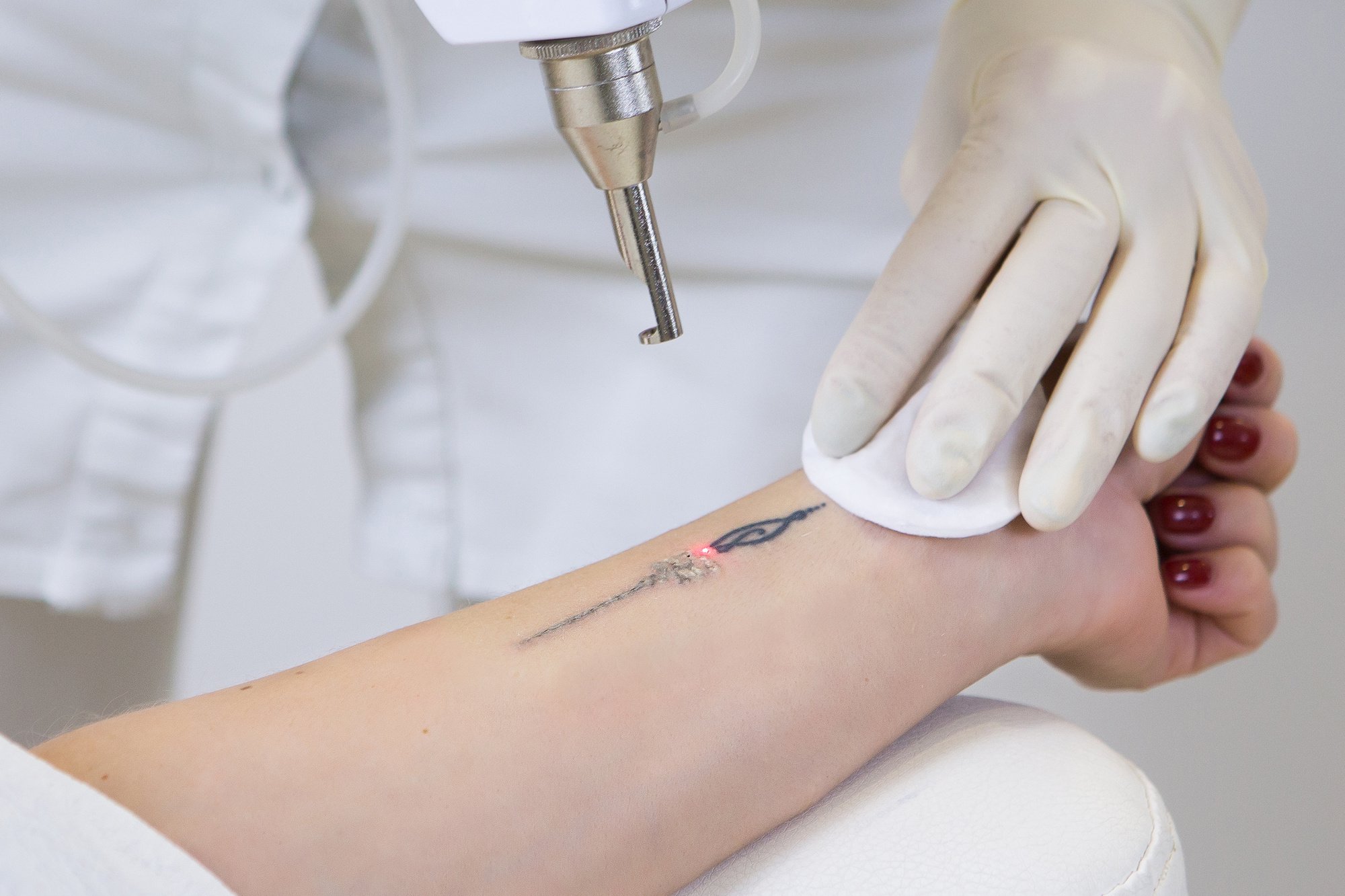
Nearly one-third of all Americans have at least one tattoo, and of those who do roughly one-quarter of them say they regret getting it. As a result, nearly 27 million people in the United States alone have at least one unwanted tattoo. Based on these numbers it is easy to see why the world-wide tattoo removal market exceeded 11.6 billion dollars in 2016. The vast majority of these procedures are done using laser-based tattoo removal treatments because they result in the least amount of scar tissue. In this blog post, we are going to look at the underlying biophysical process behind laser tattoo removal and the laser requirements for the procedure, but it is important to note that this procedure offers far more than just aesthetics.
We have all heard anecdotes about someone getting their partners name tattooed on themselves only to end up having the tattoo removed after the relationship has ended. But to truly understand the life-changing power of laser tattoo removal, one needs to look at the removal of hand, neck, and face tattoos from former inmates, gang members, or survivors of human trafficking. In these cases, people get a second chance at living a normal life which is why non-profit organizations around the world, such as Jails-to-Jobs and Fresh Start Tattoo Removal, offer programs to provide free or discounted laser tattoo removal treatments.
Similar to laser hair removal which we discussed in a previous blog, laser tattoo removal utilizes a process known as photothermolysis to target the embedded ink in the epidermis and dermis. Photothermolysis is the use of laser microsurgery to selectively target tissue utilizing specific wavelengths of light to heat and destroy the tissue without affecting its surroundings. In laser tattoo removal this is accomplished by using a focused q-switched laser with a fluence of approximately 10 J/cm2, to heat the ink molecules locally. Since the q-switched laser’s pulse duration (100 ps to 10 ns) is shorter than the thermal relaxation time of the ink molecules it prevents heat diffusion from taking place. In addition to minimizing damage to the surrounding tissue, this rapid localized heating results in a large thermal differential, resulting in a shock wave which breaks apart the ink molecules. Once reduced to smaller constituents, the molecules can now be absorbed by the white blood cells and transported to the liver for processing out of the body through urination.
Black tattoos are the easiest to remove because they tend to absorb all visible and near infrared laser wavelengths, but colored tattoos add additional complexity to the laser selection process. The difficulty arises because the full range of chromophores used in the different inks all have unique absorption properties, making it virtually impossible to choose a single wavelength. For example, you cannot use a green laser to remove a green tattoo or a red laser to remove a red tattoo because the ink will inherently diffusely reflect the light instead of absorbing it. To make matters worse when you get to more complicated colors such as purple which utilize a wide variety of pigments mixed, you may need to use multiple different wavelengths to remove the ink entirely. One way that practitioners work around this issue is using second harmonic generation (typically via KTP), to double the efficacy of the process. By placing the non-linear crystal into the laser’s delivery system without adding any filtration to block the fundamental, it is possible to excite the ink with two different wavelengths simultaneously.
For a full analysis of the absorption properties of the skin effect are dependent on the laser wavelength you can refer to our previous blog posts titles “Laser Hair Removal” and “Diodes for Acne Treatment,” so we will refrain from discussing those details here.
The Quantas-Q1 series of compact diode-pumped q-switched lasers, from Quantum Light Instruments, in Lithuania is an ideal source of both near infrared and green laser light. This air-cooled, q-switched series of lasers are designed to produce high peak power pulses, easily producing the required 10J/cm2 fluence required for tattoo removal. While all the lasers in this series are suitable for laser tattoo removal, the Quantas-Q1D-1064 is by far the most applicable. Due to a short laser cavity and excellent thermal properties of the crystal, the Quantas-Q1D-1064 delivers up to 32 mJ of pulse energy with < 8 ns pulse width at a pulse repetition rate of 10 Hz (25 mJ @ 20 Hz). With a compact laser head measuring only 113 × 230 × 112 mm³ and a built-in Ethernet port, the Quantas-Q1D-1064 is ideal for integration into medical devices. In addition to the standard 1064nm laser head, Quantum Light Instruments offers an additional second harmonic generation module which can be used as an add-on to guarantee 15 mJ of pulse energy in the second harmonic.
Here RPMC we are proud to be the exclusive North American distributor for Quantum Light Instruments. If you would like to get additional technical specifications on the Quantas-Q1 compact Q-switched DPPS lasers from Quantum Light Instruments:
Talk to one of our knowledgeable Product Managers today by emailing us at info@rpmclasers.com or Contact Us with the button below!
Have questions?

 SHIPS TODAY
SHIPS TODAY 